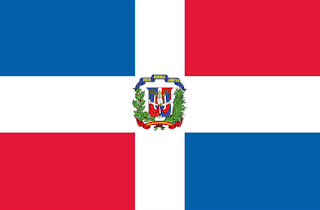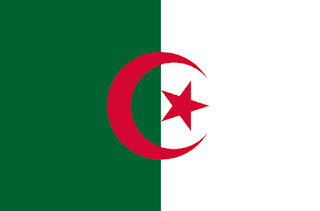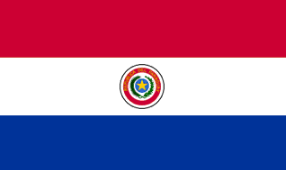FACTS ABOUT DOMINICAN REPUBLIC
AMAZING
FACTS ABOUT DOMINICAN REPUBLIC
1.
Santo Domingo is the capital city of Dominican
Republic.
2.
The total population of Dominican
Republic is 10,606,865.
3.
The natives of Dominican Republic are
called Dominicans.
4.
The Peso (DOP) is official currency of Dominican
Republic.
5.
Dominican Republic only shares a border
with Haiti.
6.
Before the formation of the Dominican
Republic and Haiti, the island was jointly named Hispaniola.
7.
The Dominican Republic is the only
country in the world to have an image of the Holy Bible on its national flag.
8.
It is also the second-largest island in
the Caribbean.
9.
The country shares the island of
Hispaniola with Haiti, making Hispaniola the one island shared by two
countries. The Dominican Republic occupies the eastern five-eighths of the
island of Hispaniola while the western three-eighths of the island is occupied
by the nation of Haiti.
10.
Street signs and restaurant menus are
written in Spanish, which is the country’s official language.
11.
People of the country are very loyal to
their families.
12.
“Catedral de Santa Maria La Menor” in
the Dominican Republic is believed to be the oldest cathedral in the Americas.
It dates back to 1540. The cathedral can be visited in the capital city of the
country – Santo Domingo.
13.
The island country saw difficult days of
brutality, conspiracy, and downfall during colonial times. It was affected by a
poor economy and political instability even after gaining independence.
However, as of today, the country is improving with the help of agriculture and
tourism.
14.
February 27, 1844, is the official
independence day of the D.R.
15.
Sugar processing is one of the main
industries in the country.
16.
People of the island nation prefer
living in joint families.
17.
The country is also known the world over
for its golf courses that are set along the breathtaking coast.
18.
The people of the region are not
punctual. Say, if you had a meeting with someone at 8 pm, you could expect them
to arrive by 8:45 or 9 pm. Arriving late is a norm in D.R., so do not fret when
you have to wait for someone to arrive.
19.
D.R. is also known for producing
excellent rum. They are known as the 3 Bs, for Brugal, Barcelo, and Bermudez.
20.
The northern west part of the island,
the Bay of Samana, sees humpback whales that visit the island every year
between December and March for mating.
21. Voting is not permitted to the members
of the armed forces and the national police.
22.
Do not be surprised if you are handed a
few chiclets in return when you pay the bill and there is some change to be
given to you. Businesses generally hand over something of equal value to your
change when the situation demands.
23.
Drinking during the day, at night and on
Sundays is completely normal. So, you can very much enjoy your drink at any
time during your visit to the country.
24.
Honking your horn as loud as possible,
in traffic jams, is considered very normal. Though honking won’t clear the
traffic, it will still keep you busy during the trying times.
25.
Coffee, sugar, and tobacco are the
island’s main sources of income. Tourism is also playing an important part in
supporting the economy now.
26.
Moreover, the capital of the
country–Santo Domingo–is the oldest city in the new world.
27.
The country experiences warm and sunny
conditions for most parts of the year. For this reason, the climate of D.R. is
also known as an “endless summer.”
28.
Coffee is their national drink, and
baseball is their national sport.
29.
“Dominican flag” is the name of their
traditional dish. It is prepared using chicken, beans, and rice.
30.
They have a beer named “Presidente.”
31.
“Merengue” is the name given to the
Dominican Republic’s music. It (Merengue) is a Spanish word for whipped egg
whites in sugar.
32.
The Dominican Republic is the site of
the first permanent European settlement in the Americas.
33.
Christopher Columbus visited the island
on December 5, 1492. Actually, he founded the island (accidentally), naming it
Hispaniola.
34.
It is the largest economy in the
Caribbean and Central American region, and the tenth-largest economy in Latin
America.
35.
A large group of people from the
Dominican Republic live in the U.S., sending billions of dollars in remittance
to their families.
36.
D.R. also served as headquarters for the
pirates of the Caribbean during the mid 17th century. Pirates recruited people
here for raiding Spanish treasure ships.
37.
It is also the most visited destination
in the Caribbean.
38.
Before independence, the country was
known as Santo Domingo.
39.
The Colonial City of Santo Domingo is a
UNESCO World Heritage Site.
40.
The western third of the island was
separated, and a new country—Haiti—was born in 1804. The remaining island at
that time was known as Santo Domingo. Haiti ruled over Santo Domingo until 1844
when the region became independent and was named the Dominican Republic.
41.
In the area, the island nation is
slightly more than twice the size of New Hampshire. It shares a land boundary
of 376 km with Haiti.
42.
Pico Duarte, at 3,098 m, is the highest
point in the country. SirRobert H. Schomburgk was the first climber to the
mountain, 1851.
43.
More than 50% of the land of the island
is used for agriculture, while 40% is covered by forests.
44.
Severe storms are experienced in the
country between June and October.
45.
The Dominican Republic is the oldest
European settlement in the Western Hemisphere.
46.
The Dominican Republic is the only
country in the world to produce a rare blue variety of the silicate mineral
pectolite. Its color changes from white, light-blue, green-blue to deep blue.
47.
Police in the country are very polite
and helpful to locals as well as tourists. Do not be afraid to ask for help,
when in need.
48.
People of the country are very thankful
and religious. You will often read the statement, “God has blessed this
business.” This signifies their belief in religion.
49.
Abortions are banned in the country,
even in cases of rape and serious health problems of pregnant women.
50.
An estimated five million people visit
the country annually. It ranks 6th overall among the most popular tourist
destinations in the Americas. The country’s administration is expecting to
reach 10 million annual visitors by 2023. Majority of the tourists come from
the United States and Canada.
51.
The Amber Museum in Puerto Plata in the
Dominican Republic has an amber stone with a prehistoric mosquito preserved
inside of it.
52.
The Dominican Republic is known as the
“Breadbasket of the Caribbean.”
53.
D.R. has the second-largest number of
Major League Baseball players. It stands second only to the United States. They
have produced many world-famous baseball players.
54.
Juan Marichal is the only Dominican
player who is a part of the Baseball Hall of Fame.
55.
On the 500th anniversary of the
discovery of the island by Christopher Columbus, a lighthouse—Faro a Colon—was
erected in Santo Domingo.
56.
The majority of women in the Dominican
Republic have curly hair. However, the women in the region like straight hair.
Hence, they visit salons to get the job done.
57.
The Dominican Republic is also home to a
threatened species of lizard in the family of Iguanidae – the rhinoceros iguana.
The lizard varies in length from 60 to 136 centimetres while their skin color
could be steely grey, dark green or brown.
58.
Lake Enriquillo is the largest lake and
the lowest elevation in the Caribbean. It covers an area of 375 square km. It
is the home of at least 400 species of the American crocodile.
59.
Legally, the drinking age in the country
is 18. And it is illegal in the country to kiss a woman in front of a police
officer.
60.
Did you know that Haiti, now the
neighboring country of the Dominican Republic, also ruled over the country for
nearly 20 years?
61.
Santo Domingo also had the privilege of
being chosen as the cultural capital of the Americas for 2010.
62.
The Dominican Republic is Latin
America’s ninth largest economy followed by Guatemala, with Brazil leading at
the top.
63.
As per the UN (2014), an estimated
69,000 people living in the Dominican Republic are affected by HIV and AIDS.
And there are almost 37 million people in the world that are affected by this
deadly condition.
64. The Dominican Restoration War led to the
withdrawal of Spanish forces from the country. The war was fought between 1863
and 1865.
65. Dominican Republic Exports:
gold, silver, cocoa, sugar, coffee, tobacco, meats and consumer goods.
66.
Dominican Republic Imports:
petroleum, foodstuffs, cotton and fabrics, chemicals and pharmaceuticals.
67.
The internet country code for Dominican
Republic is .do.




Comments
Post a Comment